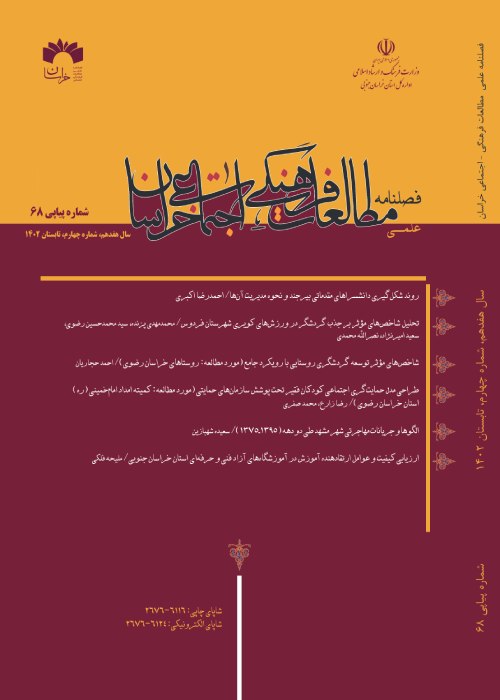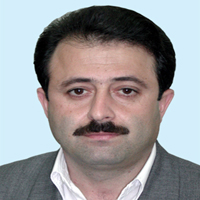Changes in family structure from the perspective of registration statistics (Case study: Great Khorasan)
Due to the importance of demographic changes in Iran in the last four decades, the central theme of this article is the problem of family structure change using a review of vital events of birth, marriage, and divorce in the archives of the Civil Registration Organization. Theories of demographic transition, rational choice, and globalization have been used to analyze changes in family structure. Documentary method and secondary analysis have examined the statistics of births, marriages, divorces, the average age of mothers, changes in mothers' age groups, comparison of women's marriages and fertility by age group, changes in the ratio of 100 marriages to divorces. The results of studies showed that: Statistics of essential events from 1355 to 1395 in the provinces of Greater Khorasan, in addition to the impact of implemented policies, indicate a change in family attitudes and practices and, consequently, reduced fertility, reduced desire to start a family and marriage and There has been considerable growth in divorce. The average age of mothers has increased in all three provinces. The highest number of births in the mentioned provinces is mothers aged 25-25 and the lowest number of children to mothers over 49 years old. The result of comparing births in 1397 with 1389 based on the age group of mothers showed that the first rank of childbearing from mothers aged 20-24 to 25 to 29 years and the second rank of births from mothers aged 25-25 years has changed to 30-30 years, which indicates an increase in maternal age. It has in the mentioned provinces. Women under the age of 15 to 24 living in rural areas are more likely to have children than urban women in the same age group. According to the second population transition theory, the higher the development in a society, the higher the fertility rate, the lower the marriage rate, and the higher the divorce rate. On the other hand, the intensification of borderless social relations in the form of extensive communication networks and parents' rational evaluation of the economic, social, and cultural benefits of having a child, has changed attitudes and values in the family and provided the basis for changing family structure.
- حق عضویت دریافتی صرف حمایت از نشریات عضو و نگهداری، تکمیل و توسعه مگیران میشود.
- پرداخت حق اشتراک و دانلود مقالات اجازه بازنشر آن در سایر رسانههای چاپی و دیجیتال را به کاربر نمیدهد.






